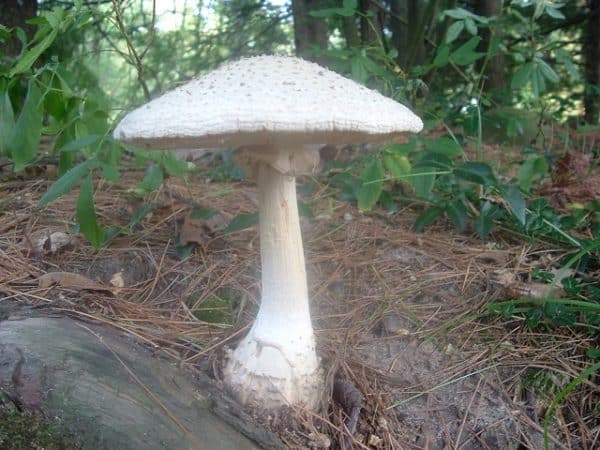
 The B.C. Centre for Disease Control is warning Vancouverites about foraging for wild mushrooms within the city limits, as a non-native species called the death cap mushroom has been spotted in greater numbers this year.
The B.C. Centre for Disease Control is warning Vancouverites about foraging for wild mushrooms within the city limits, as a non-native species called the death cap mushroom has been spotted in greater numbers this year.
Looking much like a common field mushroom, the highly poisonous Amanita phalloides actually smells and -according to some who have ingested it- tastes delicious but it is one of the deadliest mushrooms on the planet, reported to have caused more fatalities than any other fungus.
An invasive species native to Europe, the death cap is believed to have been brought to Vancouver on the roots of imported hardwood trees in the 1960s and 70s.
The fungus can spend up to 50 years underground before producing a fruit – the stalk and cap we see above ground. First spotted in Vancouver in 2008, the death cap is currently spreading throughout Vancouver and has been found on Vancouver Island and the Fraser Valley as well.
The warning from the Centre for Disease Control and the Vancouver Mycological Society was spurred by a recent increase in calls to the B.C. Drug and Poison Information Centre (DPIC). “In a typical July we might get a dozen calls regarding exposures to poisonous foraged mushrooms, and this year we’ve had double that,” said Dr. Roy Purssell, medical director of DPIC. “We’re especially concerned about death cap mushrooms, which are highly toxic.”
Eating just small amounts of the death cap will cause symptoms such as nausea, vomiting, liver failure and kidney failure. Although signs of illness don’t usually appear until eight to twelve hours after ingestion, even just one mushroom cap is enough to kill a person.
According to the California Poison Control System, death caps are abundant in the state, where between 2010 and 2015, five people have died after unsuspectingly eating the mushroom.
“The trouble is, people feel fine for six to 12 hours after they’ve eaten death caps,” says Dr. Kent Olson of the San Francisco Division of the California Poison Control System. “But during that time, a toxin in the mushroom is quietly injuring their liver cells.” In severe cases, liver transplant is the only way to save the patient, and about half of poisoning cases that reach the point of liver damage end up in coma and death.
The B.C. Centre for Disease Control reports an average of 100 calls per year related to mushroom poisoning, with half of the calls coming from parents concerned about their toddlers accidentally ingesting wild mushrooms, only a few of whom end up more than moderately ill. For the most part, calls related to teenagers and adults either stem from those who mistakenly harvested poisonous mushrooms or from people who intentionally ate wild mushrooms to get high.
The Centre says even for experts, identifying poisonous mushroom species is difficult and having guidebooks with pictures can only help so much as many edible varieties have poisonous look-a-likes. They advise that mushroom pickers only pick and eat easily identifiable, well known mushrooms, that people eat only small amounts and, “If you are unsure, don’t eat it!”
Below: This Mushroom Starts Killing You Before You Even Realize It | Deep Look
Comment
Leave a Reply
You must be logged in to post a comment.




 Share
Share Tweet
Tweet Share
Share




If you are unsure, cppl spme up and feed them to your mother in law. Wait about 12 hours, and then decide whether to eat them. I have found thid method foolproof.
lol…..Until you runout of mother inlaws